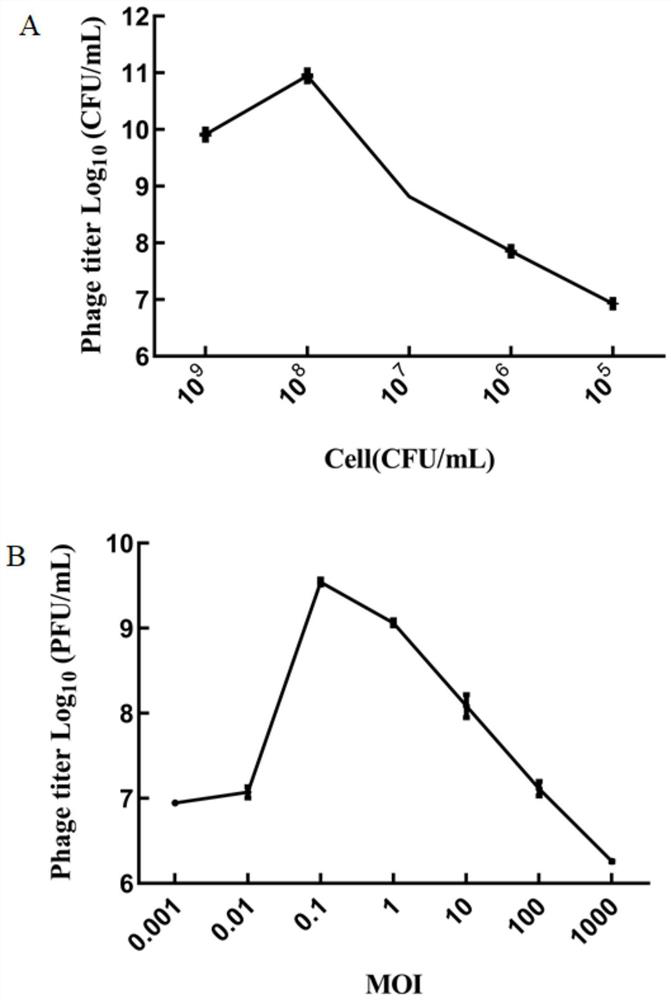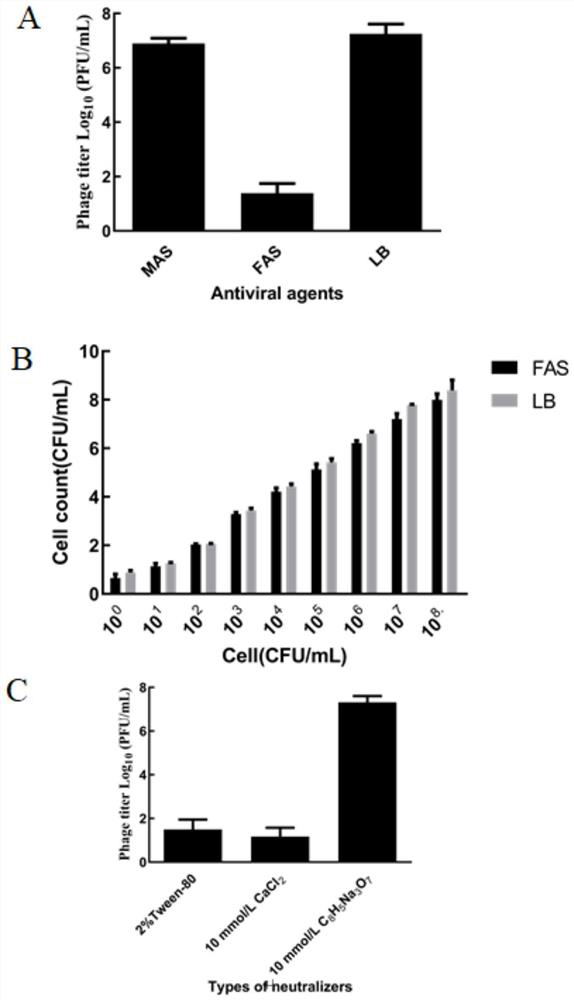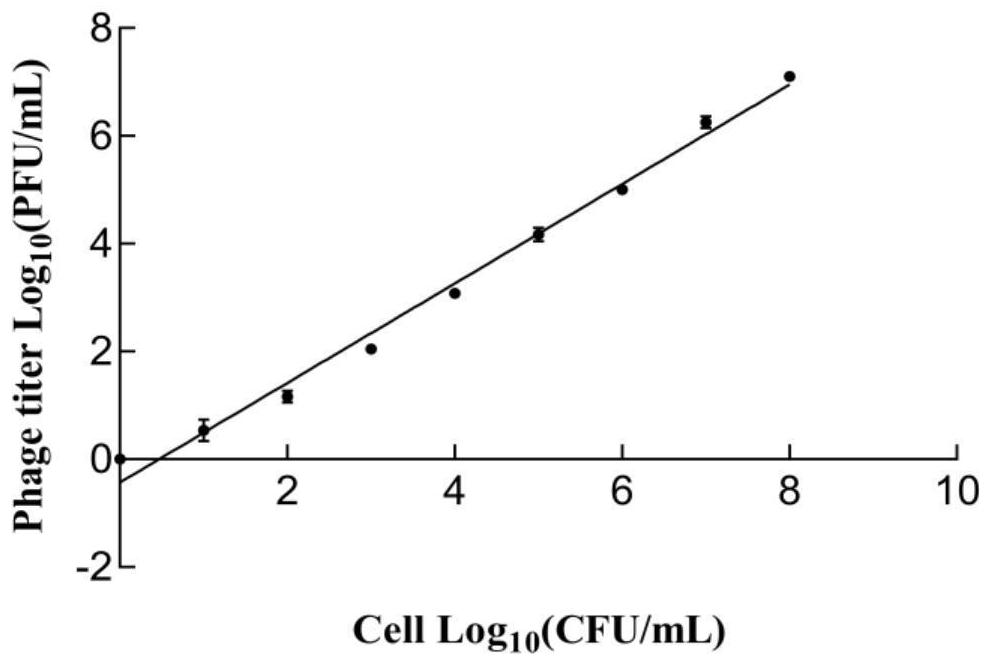Biological amplification-real-time fluorescent quantitative PCR combined kit and method for rapidly detecting staphylococcus aureus bacteriophage
A real-time fluorescence quantitative, phage biological technology, applied in biochemical equipment and methods, microbial determination/inspection, DNA/RNA fragments, etc., can solve the problem of time-consuming, achieve optimized experimental conditions, high sensitivity, low cost Effect
- Summary
- Abstract
- Description
- Claims
- Application Information
AI Technical Summary
Problems solved by technology
Method used
Image
Examples
Embodiment 1
[0053] Activation of Example 1 Phage
[0054] 1. Activation of host bacteria
[0055] Take out the staphylococcus aureus ATCC 25923 stored in the glycerol tube from the refrigerator at -80°C and inoculate it on the Baird Parker solid medium, culture it at 37°C for 12 hours, pick a single colony and inoculate it in 3 mL of LB liquid medium, and inoculate it on Baird Parker solid medium. Cultivate on a shaker at 37°C and 160r / min for 8 hours, take 100 μL of the cultured bacterial solution, and measure the concentration of the bacterial solution by the dilution coating method;
[0056] Bacterial concentration (CFU / mL) = number of single colonies × dilution factor × 10;
[0057] 2. Phage Activation
[0058] Take out the phage LSA2311 stored in the glycerol tube from the -80°C refrigerator and mix it with the logarithmic phase host bacteria solution for 12-18h. Centrifuge the cultured mixture at 8000r / min for 10min at 4°C. The host bacteria were removed by filtration through a p...
Embodiment 2
[0059] The establishment of embodiment 2 phage biological amplification method
[0060] 1. Effect of host bacteria concentration
[0061] Staphylococcus aureus ATCC 25923 bacteria solution was serially diluted 10 times (10 5 -10 9 CFU / mL), 100 μL of each concentration was mixed with the same volume of phage LSA2311 (10 7 PFU / mL), the volume was made up to 1mL with LB medium, placed in a culture shaker at 37°C, shaken at 160r / min for 24h, centrifuged and sterilized by filtration, and the phage titer was determined by the double-layer plate method. The optimal concentration of host bacteria was selected by progeny phage titer.
[0062] Depend on figure 1 A Visible: 10 8 The phage titer after amplification of the host bacteria with CFU / mL concentration was significantly higher than 10 9 and 10 7 CFU / mL concentration group, so the concentration of host bacteria in the culture system was determined to be 10 8 CFU / mL.
[0063] 2. Selection of Phage Titers
[0064] Determi...
Embodiment 3
[0081] Evaluation of embodiment 3 phage biological amplification method in Staphylococcus aureus detection
[0082] 1. Specificity of phage biological amplification method
[0083] 40 strains of bacteria (see Table 2) were detected by the phage biological amplification method. At the same time, Staphylococcus aureus ATCC 25923 inactivated by heat treatment at 100°C for 10 minutes was set up as the experimental group, and live bacteria without heating were used as the control group to observe the ability of the phage biological amplification method to detect Staphylococcus aureus.
[0084] Detected by phage biological amplification method, among 40 strains of bacteria, 29 strains of Staphylococcus aureus had plaque formation; 11 non-staphylococcus aureus had no plaque formation; heat-inactivated Staphylococcus aureus ATCC 25923 had no plaque formation Plaque formation, but not inactivated plaque formation. It can be seen that the phage biological amplification method can only...
PUM
 Login to View More
Login to View More Abstract
Description
Claims
Application Information
 Login to View More
Login to View More - R&D
- Intellectual Property
- Life Sciences
- Materials
- Tech Scout
- Unparalleled Data Quality
- Higher Quality Content
- 60% Fewer Hallucinations
Browse by: Latest US Patents, China's latest patents, Technical Efficacy Thesaurus, Application Domain, Technology Topic, Popular Technical Reports.
© 2025 PatSnap. All rights reserved.Legal|Privacy policy|Modern Slavery Act Transparency Statement|Sitemap|About US| Contact US: help@patsnap.com



